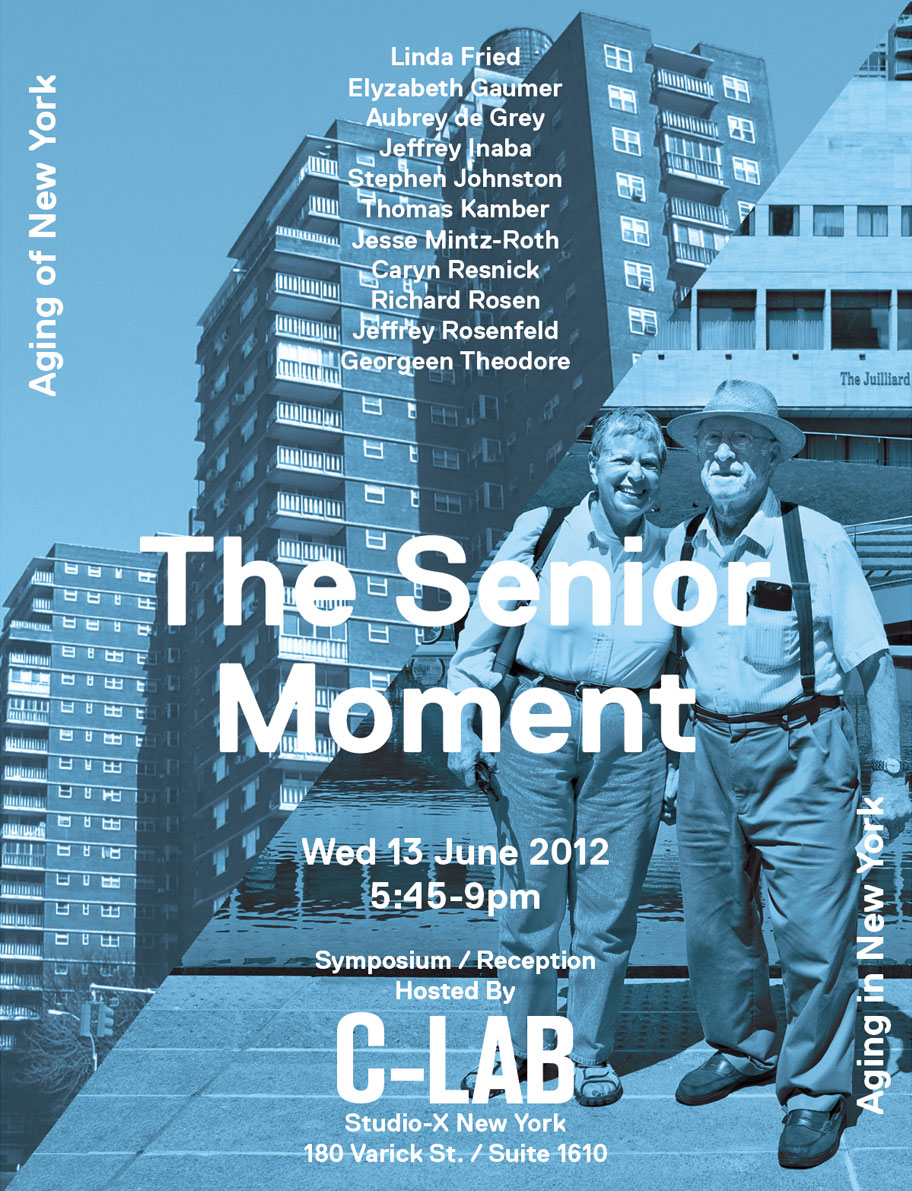The Senior Moment

Please join the Columbia Lab for Architectural Broadcasting (C-LAB) at Studio-X from 5:45 – 9pm on Wednesday 13 June for an evening event on aging and New York City.
Continuing the work begun in issue 27 of Volume magazine, ‘Aging: Fight or Accept’ and more recently, with the C-Lab-certified issue 29, ‘The Urban Conspiracy’, this symposium engages experts from multiple disciplines who are actively shaping the future of aging in cities. From housing and environmental design to emerging technologies and social networks that foster aging-in-place, The Senior Moment will both survey and challenge received notions about the aging population and the aging built fabric of New York. The presentations and discussion will be followed by a reception. The event is free and open to the public.

Participants include Linda Fried (Dean, Columbia Mailman School of Public Health), Elyzabeth Gaumer (Director of Housing Policy Research and Evaluation, NYCHPD), Aubrey de Grey (Founder and Chief Science Officer, SENS Foundation), Jeffrey Inaba (Director, C-LAB), Stephen Johnston (Founder, Aging 2.0), Thomas Kamber (Executive Director, OATS), Jesse Mintz-Roth (Senior Project Manager, NYCDOT), Caryn Resnick (Deputy Commissioner, External Affairs, NYCDFTA), Richard Rosen (Principal, Perkins Eastman, Co-Chair, AIA Design for Aging Committee), Jeffrey Rosenfeld (Gerontologist and Professor of Design, Parsons The New School for Design), and Georgeen Theodore (Principal, Interboro Partners).
Aging and urban design go hand-in-hand as issues of physical resilience play out both in the body and in material of the city. If at the macro level, population aging is too often considered a point of socioeconomic crisis rather than as a resource with embedded potential, when scaled down to the individual, aging is seen as a liberating phenomenon, enabling baby boomers with surplus dollars to actively pursue any number of alluring post-retirement fantasies. Within this space between crisis and hedonism is a more measured practice of life-course management, eroding the clean break between adulthood and senior citizen status. Here, a person is considered to be aging from the moment of birth and the physical environment is called upon to support healthy habits and lifestyle practices from day one. Consciously or not, this discursive framework brings forward issues such as risk and analytical power when evaluating both the permissible extent of personal freedom and the need for smarter approaches to the material environment.
With this ecological turn, the implications of the existing built environment take on a greater immediacy. For cities that are largely built-out, improvements to the physical fabric must often contend with the demands of historic preservation, the lack of available space, the need for adaptive reuse, and the difficulties posed by overtaxed and aging infrastructures. In this context, urban revitalization requires creativity in design and policy negotiation, forcing architects and planners to step up their games in order to exert any effect on the city. With regard to aging populations, naturally-occurring retirement communities (NORCs) and new street plazas or pop-up parks are representative of the types of projects that might emerge in the “City 2.0,” but additional innovations will be required to address both an aging building stock and a new crop of buildings whose lifespans are outstripped by those of their inhabitants.
The Senior Moment will engage the two parallel threads of aging in the city and aging of the city as they pertain to New York and serve as a prototype to develop a means by which to approach other cities across the globe as they begin to grapple with the urgencies of aging.